Farnese Fountain at Santa Lucia, Lago Di Vico, Caprarola
If you are able to visit the Farnese exhibit in Rome before it closes in mid May, you will notice that while the exhibit opens with many portraits of the Farnese men in all their finery, few women are portrayed. Their absence is not unusual for girls were generally treated as pawns in power games - to be married for political advantage or, if a matrimony was not in the cards, a girl often ended up spending her entire life in a convent.
Two Farnese women who broke the rules were “erased” for centuries but their portraits and their lives are now being rediscovered.
Giulia ( la Bella) Farnese (1489-1524) was a key player in the Farnese family’s rise to prominence. Thanks to Giulia’s amorous connection to Rodrigo Borgia ( Pope Alexander VI -1492 to 1503), her brother Alessandro became a Cardinal and eventually pope (Paolo III 1534-49). In order to play down sister Giulia’s part in his successful career, he had portraits of Giulia that existed in the Vatican apartments and Farnese residences hidden or destroyed.
But new discoveries by local art historians have brought to light some works portraying “la Bella Giulia” that did survive. In the small town of Vasanello a sculpted bust of Giulia has come to light in Castello Misciatelli where she lived with her first husband, an Orsini, as well as a fresco with Giulia portrayed as a Madonna with Child. At the castle of Carbognano, home to Giulia in her later years, local historian, Andrea Postiglione, recently discovered a carved bas-relief of a woman’s face and the name IULIA above the door to what was once Giulia’s bathroom.
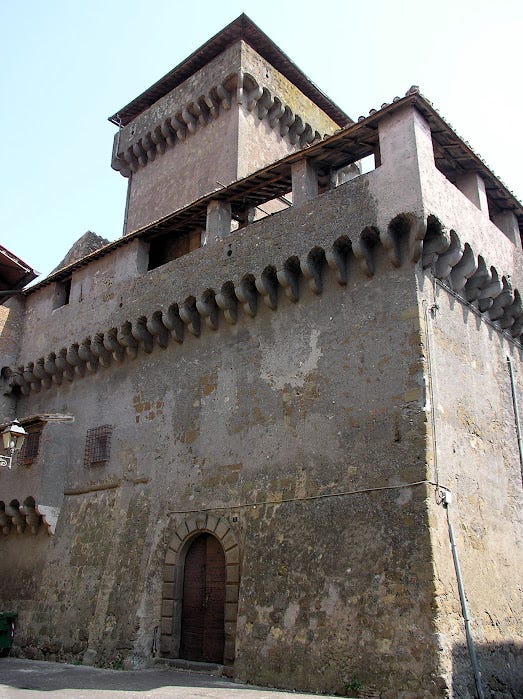
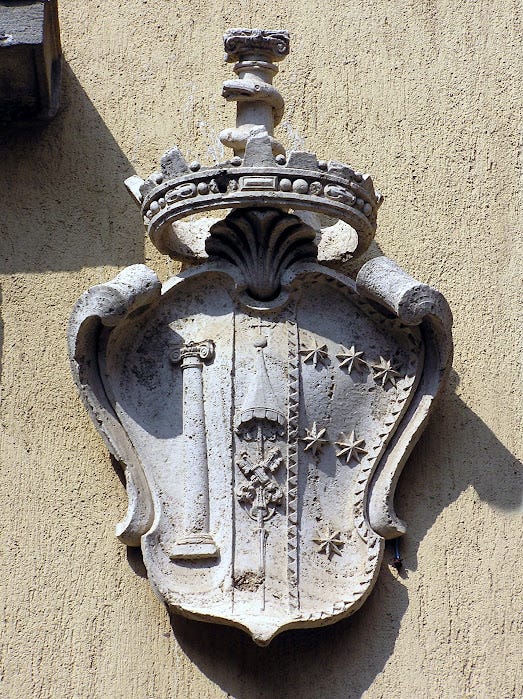
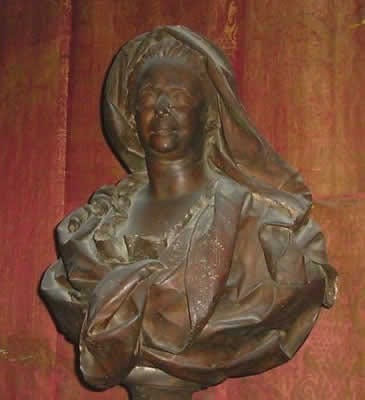
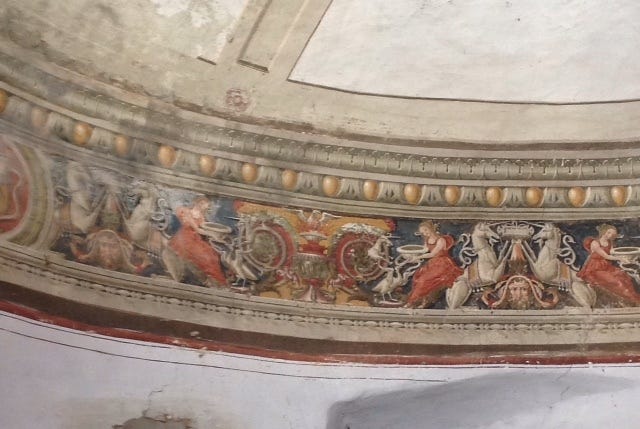
Another Farnese woman became “invisible” because her life was dappled with accusations of murder. This was Ortensia Farnese (15??-1582) known as the “Lucrezia Borgia of Parrano” one of the several castle towns she owned. Her family ties to Pope Paul III Farnese allowed her to avoid punishment and towards the end of her life she became the perfect penitent, as shown in the portraits rediscovered in Vetralla . Thanks to the restoration of frescoed walls in the church of San Pietro (also known as the Madonna del Riscatto/ Ransom) two portraits of Ortensia can now be seen and studied.
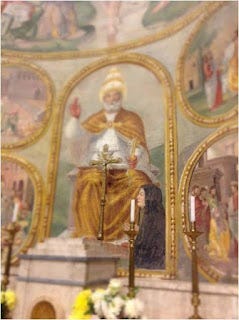
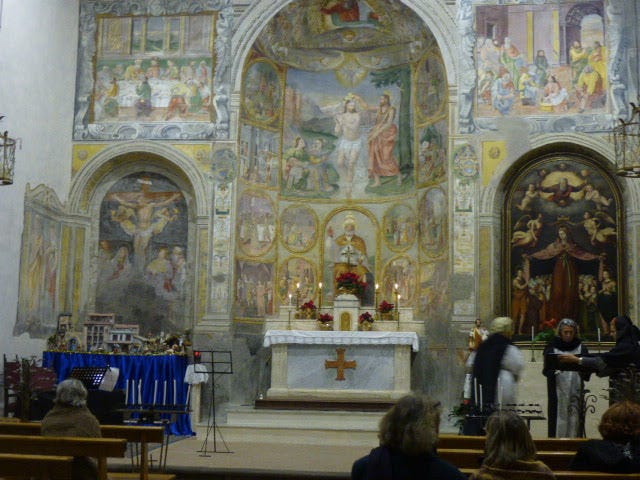
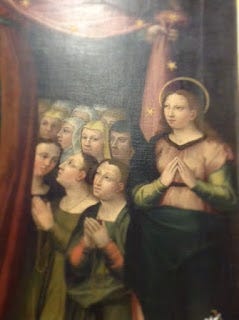
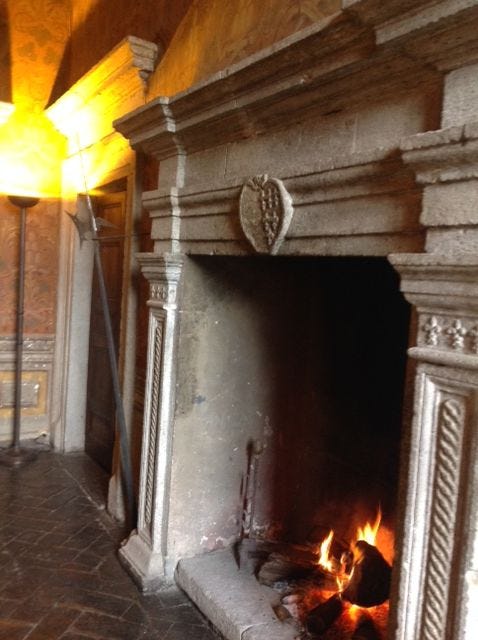
Vetralla church with Ortensia’s portraits, Vignanello castle fireplace with half obliterated arms
Ortensia is shown as the black veiled penitent widow kneeling in front of enthroned St. Peter and also one of the women beneath the protective cloak of the Madonna in the huge canvas which is carried through the town in procession every 25 years. The blue and gold Baglioni coat-of-arms that adorns the apse of the church identifies the woman portrayed as Ortensia, for besides being a Farnese, her father and third husband were members of the Baglioni clan.
Its a very complicated story that the video makes clearer. Click on the underlined link to see the interior of the church and the full story in the video at min. 5,45
Ortensia’s parents were Beatrice Farnese (Latera branch) and Antonio Baglioni a noble of Perugia. Around 1531 she married mercenary soldier Sforza Marescotti (of Scottish descent) and had two children. When Beatrice died in 1536 Ortensia inherited the title Countess of Vignanello along with the town and castle. Together with Sforza she ruled the town until his mysterious death two years later, in 1538.
Researchers, including Maurizio Grattarola of Vignanello, have discovered contemporary documents narrating how, instigated by Ortensia, the violent Sforza was murdered by local people of Vignanello, and his coat of arms was scratched off the castle’s fireplace!
In 1539 Ortensia took a second husband, Girolamo da Marsciano and had two boys, but in 1545 a plate of poisoned maccheroni took Girolamo to his death and she took refuge in another family castle in nearby Sipicciano. By 1548 she was back in Vignanello where she governed on her own for three years before a third marriage: to Ranuccio Baglioni. In 1554 Ranuccio was killed in an ambush and both Ortensia and her son Alfonso (Marescotti) were accused of having been part of the plot.
Ortensia was then caught up in a fierce legal battle with her daughter Elena (daughter of Ranuccio) over the ownership of the castle in Parrano. When Elena was poisoned it was natural for mother Ortensia to be accused.
At her death in 1582 Ortensia was buried in the church S. Giroloma della Carità in Rome, just down the street from one of the family’s most imposing properties - Palazzo Farnese- now the French embassy. Significantly her funerary monument bears the names Farnese and Marescotti since her Marescotti son would be continuing the family dynasty in Vignanello. Ortensia had received a full pardon for her heinous acts from the Farnese pope and was protected by another relative, the Grand Cardinal Alessandro Farnese who was governor of Vetralla and Civita Castellana during the years these events took place.
In the video you can see the Farnese Cardinal wearing his red hat and eyeglasses along with members of the Sacconi, the same white-hooded members of the Misericordia confraternity that still exists today in Vignanello. Their presence in the Vetralla painting are a demonstration of Ortensia’s repentance and the protection given to her by the Farnese family.
Some Substack writers are using AI (Artificial Intelligence) to produce images and text, a fact they should announce. Here you will be reading only words produced by HI (Human intelligence) and material researched, gathered and published after long hours and over the arc of the past 40-50 years. If you have time and are curious I invite you to take a look -click on the underlined link to see the Bibliography and books pages on my website.
Here are a few books from my library about Caprarola and the magnificent Farnese palazzo -also known as “villa” since it was their “country place”. More about capricious women (including two Americans ) who lived there can be found in my Etruria book.
Thanks for all the interesting comments and questions. Its also a pleasure to meet readers/subscribers personally if you are visiting the Tuscia area (1 hour north of Rome). Viterbo, the town next to mine was where the first and longest papal conclave took place so it is popping up in the news nowadays.
All photos copyright © 2013-2025 Mary Jane Cryan


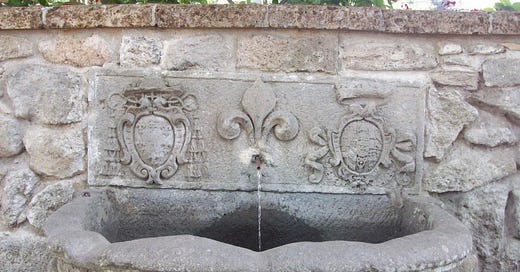



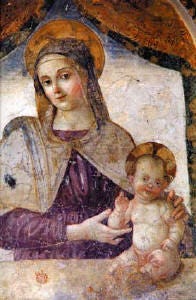
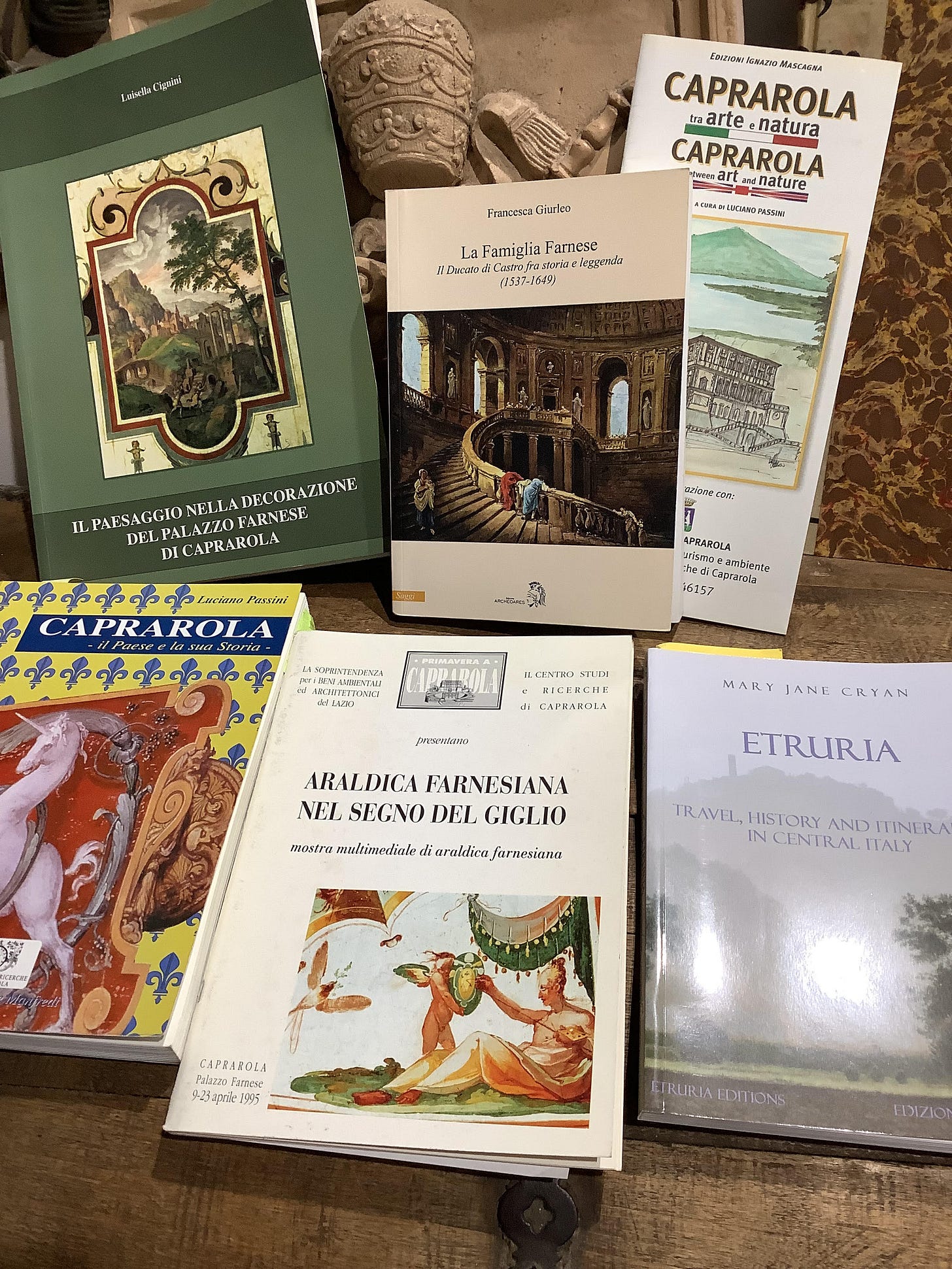

So very interesting, Mary Jane. Thank you!
I have always wanted to visit Caprarola! I must try to make it down to Rome before that exhibition closes. Thank you for the reminder.